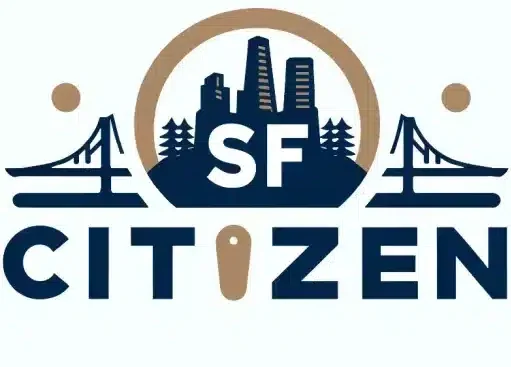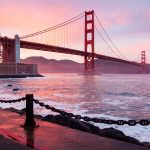The Bayshore Freeway, officially known as US Route 101, is a vital transportation artery that runs through the heart of San Francisco, connecting the city to Silicon Valley and beyond. Spanning approximately 50 miles within the city limits, this freeway serves as a crucial link for thousands of daily commuters, residents, and visitors alike.
In This Article
Key Points
- Bayshore Freeway is a crucial part of US Route 101, serving as a major artery through San Francisco and connecting the city to Silicon Valley.
- It plays a significant role in the daily commute for thousands, linking residential areas with business districts.
- The freeway has undergone several upgrades to improve traffic flow and safety, reflecting its importance in the region’s transportation network.
Historical Context of Bayshore Freeway
The origins of the Bayshore Freeway date back to the early 20th century when San Francisco’s rapid growth necessitated the development of efficient transportation infrastructure. Construction of the freeway began in the 1920s and continued in phases over several decades, with major expansions and improvements taking place in the 1950s and 1960s.
The completion of the Bayshore Freeway had a profound impact on San Francisco’s development, enabling the city to expand and connect with surrounding communities. It facilitated the growth of residential areas in the southern part of the city and provided access to emerging business districts, such as the Financial District and SoMa (South of Market).
In recent years, the freeway has undergone several upgrades to enhance traffic flow, safety, and seismic resilience. These improvements include the widening of lanes, the addition of carpool lanes, and the retrofitting of bridges and overpasses to withstand earthquakes.
Navigating Bayshore Freeway
Navigating the Bayshore Freeway can be challenging, especially during peak traffic hours. Key entry and exit points in San Francisco include:
- The intersection with Interstate 280 near the Alemany Maze
- The Cesar Chavez Street exit, providing access to the Mission District
- The 4th Street exit, leading to the SOMA and Financial District
- The connection to the San Francisco-Oakland Bay Bridge
To navigate the freeway safely and efficiently, it’s essential to plan your route in advance, allow extra time during rush hours, and stay alert to changing traffic conditions. Using real-time traffic apps and following posted speed limits can also help ensure a smoother journey.
Connection to Major Roads and Bridges
The Bayshore Freeway is well-integrated with San Francisco’s broader transportation network, connecting to several major roads and bridges. It links directly to the San Francisco-Oakland Bay Bridge, providing access to the East Bay, and connects with Interstate 280, which runs along the western side of the city.
Additionally, the freeway intersects with numerous key arterial roads, such as 3rd Street, Cesar Chavez Street, and Geneva Avenue, ensuring efficient circulation throughout the city.
Public Transportation Options
For those looking to avoid driving on the Bayshore Freeway, several public transportation options are available. Numerous bus routes, operated by the San Francisco Municipal Transportation Agency (SFMTA), run along or adjacent to the freeway, providing connections to various neighborhoods and downtown areas.
The freeway is also in close proximity to several Bay Area Rapid Transit (BART) stations, including the Glen Park and Balboa Park stations. These stations offer rapid transit services to destinations throughout the Bay Area.
Furthermore, Caltrain, a commuter rail service, runs along the Bayshore Freeway corridor, with stations at key points such as Bayshore, South San Francisco, and San Francisco (4th and King Streets).
Explore San Francisco via Bayshore Freeway
The Bayshore Freeway provides access to many of San Francisco’s most popular attractions and neighborhoods. Visitors can easily reach destinations such as:
- The Mission District, known for its vibrant murals, diverse cuisine, and cultural events
- The SOMA district, home to museums, tech companies, and a thriving nightlife scene
- The Embarcadero, featuring the Ferry Building, waterfront parks, and scenic views of the Bay Bridge
For a more scenic drive, consider taking the Bayshore Freeway south to the Candlestick Point State Recreation Area, which offers stunning views of the San Francisco Bay and opportunities for outdoor activities like hiking and fishing.
Safety Measures and Environmental Impact
To enhance driver and pedestrian safety, the California Department of Transportation (Caltrans) has implemented various initiatives along the Bayshore Freeway. These include the installation of median barriers, the improvement of lighting and signage, and the construction of pedestrian overpasses in high-traffic areas.
Efforts are also underway to reduce the environmental impact and noise pollution associated with the freeway. Caltrans has introduced measures such as the use of rubberized asphalt to minimize tire noise and the installation of sound walls in residential areas.
Looking to the future, plans are in place to promote sustainable transportation solutions along the Bayshore Freeway corridor. These include the expansion of carpool and express lanes, the enhancement of public transit services, and the development of bicycle and pedestrian infrastructure.
Economic and Social Implications
The Bayshore Freeway plays a vital role in supporting commerce and connectivity within San Francisco and the broader Bay Area. It enables the efficient movement of goods and services, connecting the city’s major business districts with regional transportation hubs like the Port of San Francisco and San Francisco International Airport.
The freeway also has a significant influence on property values and urban development patterns. Proximity to the freeway can impact real estate prices, with some areas experiencing increased demand due to their accessibility, while others may face challenges related to noise and air pollution.
Communities along the Bayshore Freeway have adapted to its presence in various ways, with some neighborhoods embracing the connectivity it provides and others advocating for mitigation measures to address its negative impacts.
FAQ
How long is the Bayshore Freeway within San Francisco city limits?
The Bayshore Freeway spans approximately 50 miles within the San Francisco city limits, running from the southern border with San Mateo County to the northern terminus at the intersection with Interstate 80 near the Bay Bridge.
What are some key neighborhoods and attractions accessible via the Bayshore Freeway?
The Bayshore Freeway provides access to several notable San Francisco neighborhoods and attractions, including the Mission District, known for its murals and diverse cuisine; the SOMA district, home to museums and a thriving nightlife scene; and the Embarcadero, featuring the Ferry Building and waterfront parks.
Are there any public transportation options along the Bayshore Freeway corridor?
Yes, several public transportation options are available along the Bayshore Freeway corridor. These include numerous bus routes operated by the San Francisco Municipal Transportation Agency (SFMTA), Bay Area Rapid Transit (BART) stations like Glen Park and Balboa Park, and Caltrain commuter rail services.
What safety measures have been implemented on the Bayshore Freeway?
The California Department of Transportation (Caltrans) has implemented various safety measures along the Bayshore Freeway, such as the installation of median barriers, the improvement of lighting and signage, and the construction of pedestrian overpasses in high-traffic areas.
How does the Bayshore Freeway impact San Francisco’s economy and urban development?
The Bayshore Freeway plays a crucial role in supporting commerce and connectivity within San Francisco and the Bay Area, enabling the efficient movement of goods and services. It also influences property values and urban development patterns, with proximity to the freeway impacting real estate demand and neighborhood growth.

